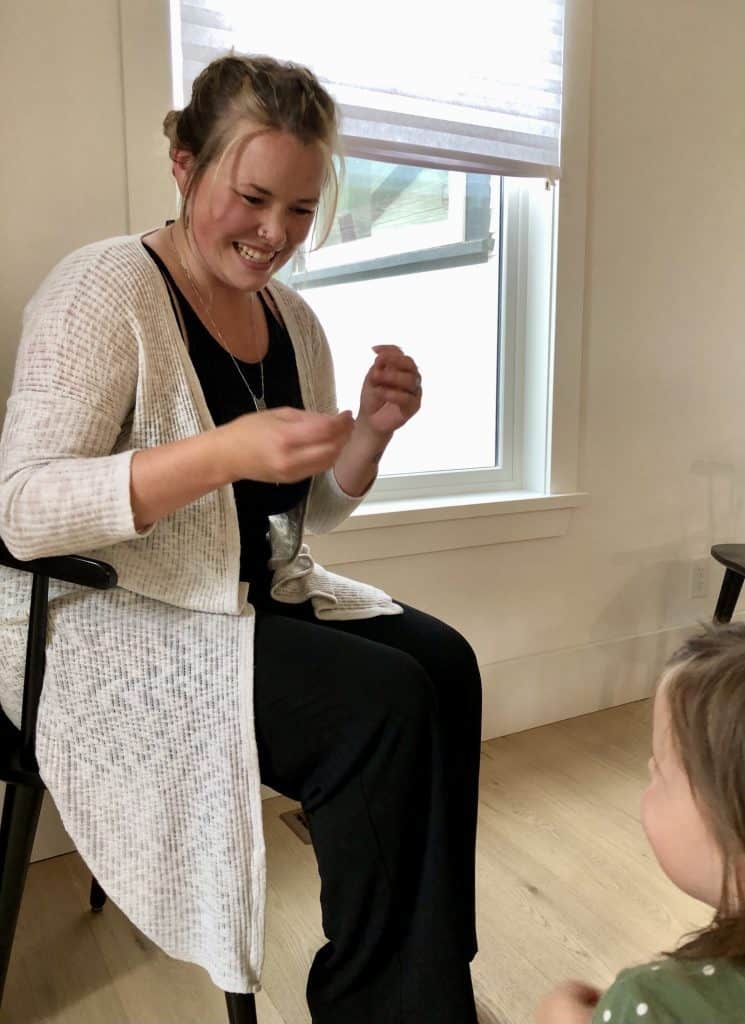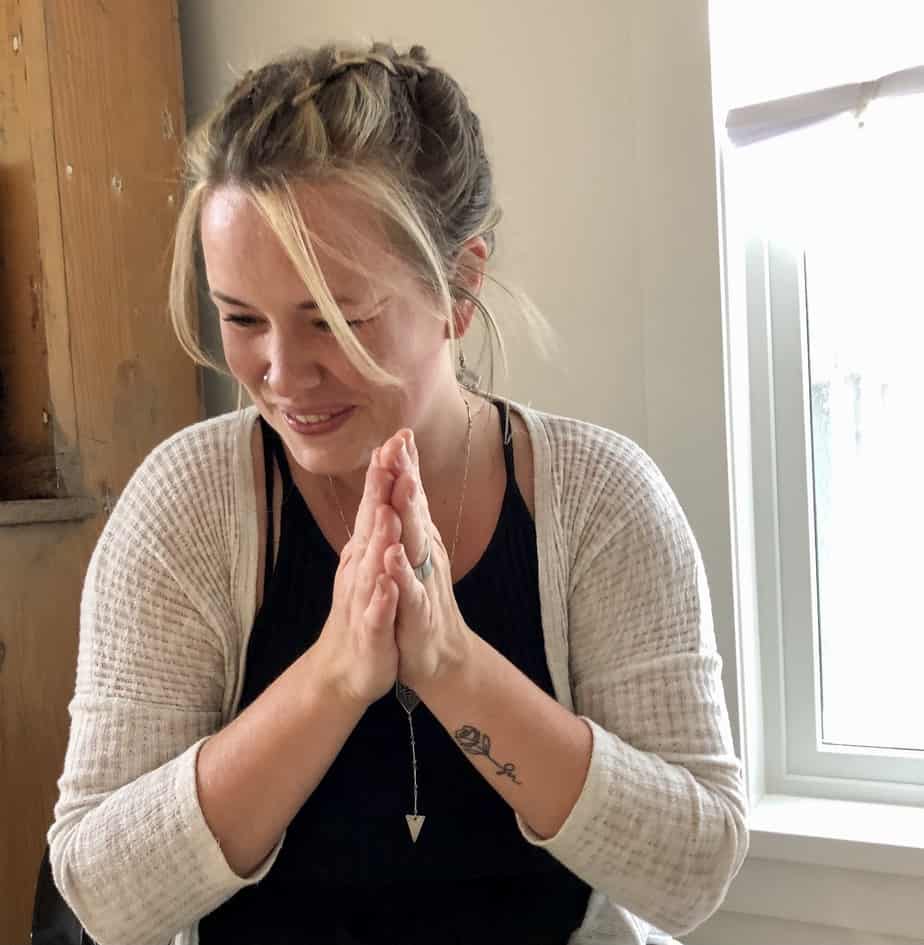Sometimes, it’s tough to get a child’s attention when they’re super focused on an activity. Whether you are a parent, a nanny, or a teacher, these quick attention-grabbing classroom management songs are great for preschool-aged children should you need to re-direct them!
Songs can be highly effective for classroom management, especially for preschool-age children. While pretty much anything can be transformed into a quick tune, there are a few fun songs that have become mainstays for classroom management (especially for attention-getting among young ones).
Classroom Management Songs For Redirecting Attention
Redirecting attention with a simple classroom management song is highly beneficial for both children and for you . By asking for some “helping hands!” or their immediate attention, you not only encourage them to participate in daily tasks (& concurrently establish good habits), but you will also relieve stress on yourself by creating more organized play.
Not only are these fun songs catchy and quick, but the transition from regular speech to singing immediately grabs their attention. This encourages them to look to you and gift you their undivided attention while you sing songs together.
All-in-all, these are great attention getters that keep children focused on the task at hand while still encouraging excitement. This also creates an effective home (and learning!) environment that decreases negative behaviors. Who would have thought a few seconds of music could have such a long-lasting impact!
So, keep reading if you would like a list of simple, quick, and effective classroom management songs that will grab your child’s attention and (perhaps more importantly) aid you in bringing control back to your day.
Also, if your child is already in preschool or Kindergarten, their teachers have probably used some of these tunes, making them already familiar to your kiddos.
Song #1: “1, 2, 3, Eyes on Me!”
This can be used if things are getting a little out of hand, too noisy, or if you require the children’s immediate attention. Integrating body actions is also key for grabbing their attention and demonstrating your needs. Here are the basics:
Leader’s Words: “One, Two, Three, Eyes On Me!”
Leader’s Actions: Count along with your fingers, then point at your eyes
Sing these words to any melody you like (or do more of a chant). Encourage the children to make eye contact with you.
Older kids may also enjoy singing “One, Two, Eyes On You” as a response (with accompanying finger-counting and pointing).
Song #2: “Hands On Top, That Means Stop!”
Another effective attention-getter song is “Hands On Top, That Means Stop!”. This song is perfect for when you need to interrupt the kids for a short announcement.
Leader’s Words: “Hands On Top, That Means Stop!”
Leader’s Actions: Put your hands on top of your head
Put your own hands on your head while you sing (and keep them there). Since your littles will be copying your actions, you now have a few seconds to reset their focus!
Once you’ve reset their focus, follow up by taking your hands off your head “Hands Down Low, That Means Go!”. The kids can then resume playing.
Song #3: “Clean Up, Clean Up” (The Clean-Up Song)
The Clean-Up Song is popular for good reason! If you can’t quite remember the tune, check out this classic video to learn the melody to the clean-up song.
Leader’s Words: “Clean-up, Clean-up, Everybody Everywhere, Clean-up, Clean-up, Everybody Do Your Share!”
Leader’s Actions: Mimic picking up toys and putting them away
The Clean-Up Song is most effective when a 5-minute warning is given. Just like we, too, can become totally engrossed on whatever we’re working on in the moment — Children alike do this with their play!
Rather than abruptly transitioning, letting the children know that you plan to change activities has many benefits. This can reduce anxiety, frustration, and upset while creating excitement for the next task.
I often prelude clean-up songs with statements like “Woah! Have you seen this mess?! How on earth did that happen?!”, then tell them that it looks like we’re going to need a lot ofhelping handsto tackle the responsibility together. Encouraging collective responsibility sets a great foundation for later in life, when they are able to take on individual chores.
Song #4 – “It’s Time To Tidy Up”
“It’s Time To Tidy Up” is another option for an end-of-activity classroom management song. Like the previous song, this song works best when a 5-minute-warning is given prior to singing the song. The words are generally sung to the tune of “He’s Got The Whole World In His Hands.”:
Leader’s Words: “It’s Time to Tidy Up, It’s Time to Tidy Up! It’s Time to Put the Toys Away, So We Can _______ (insert next intended action here)”
Leader’s Actions: Mimic picking up toys and putting them away
It’s super helpful to communicate with children that while you’re excited about playing with them, that we only need 1 toy or activity out at a time. Having limited toys out at any given time makes clean-up way easier when play/activity-time is over. Doing so also reduces overstimulation for children who struggle when there are too many options presented at once.
Song #5: “I Am Hungry”
This classroom management song is perfect for snacktime or right before lunch! This one is a bit longer than the others, but I find that it increases meal-time excitement for students/kids (which sometimes makes it a tiny bit easier to coax fussy eaters into trying new foods) and eases the transition from play to eating.
Leader’s Words: “Hungry, hungry, I am hungry. Table, table, here I come! I’m so hungry I could eat a Moose-Goose burger, sixteen pickles and a purple plum!”
Leader’s Actions: Rub your tummy as if its rumbly,
Once familiar with the mealtime song, I begin asking children after it’s finished how hungry they are!
The responses are sure to keep you all laughing as they come up with wild and hilarious foods that they could fit in their hungry bellies!

Extra Tips For Classroom Management Songs
Though not always through song, you would be amazed at the control you can have over children’s actions just through being intentional in the tone or volume of your own voice. This is helpful to remember while going about the day — Being conscious of your verbal delivery can aid you in encouraging good behaviors, discouraging bad, and helping transition to different parts of your schedule with (relative) ease. Use the full range of your voice in addition to songs to help with classroom management.
Morning Welcome Song Ideas for Managing Classroom Behavior
For example, “Goooooooooood Morning, Little Ones!” in a sing-song voice is a gentle way to wake the children up pleasantly, which starts the day on a positive note. Alternatively, excitedly asking “Who’s Ready to PLAY?!” can get them cheering in 2 seconds flat when you’re trying to up the energy for a fun activity. Any welcoming phrase can be turned into a classroom management song!
Sleepy-Time Wind-Down Voice Tips
Most helpful, I find, is reducing my volume and consciously speaking in a soft, yet firm, voice when moving towards bedtime.
Many children struggle with going to sleep. Having to let go of the day’s exciting activities to rest may be tough when they aren’t quite feeling sleepy. A great way to help with this is to:
- Give children a heads-up that bedtime will be soon!
- Lower your own voice, while reminding the kids that we’re getting ready to sleep – so we should use our soft night-time voices!
- Try a quiet, low-energy bedtime activity.
- Reading a bed-time book at a soft, low volume is a really helpful tool. Often, by the end of the story (or 2) the children are sleepy-eyed and calm as they crawl into bed.
There you have it! I hope that these cute songs work for you next time you need to get your kiddo’s attention. These songs are great for both teachers and parents.
Let us know which songs you like to use, or if using these songs made a difference in your home or classroom!
- Give children a heads-up that bedtime will be soon!
- Lower your own voice, while reminding the kids that we’re getting ready to sleep – so we should use our soft night-time voices!
- Try a quiet, low-energy bedtime activity.
- Reading a bed-time book at a soft, low volume is a really helpful tool. Often, by the end of the story (or 2) the children are sleepy-eyed and calm as they crawl into bed.


Leave a Reply